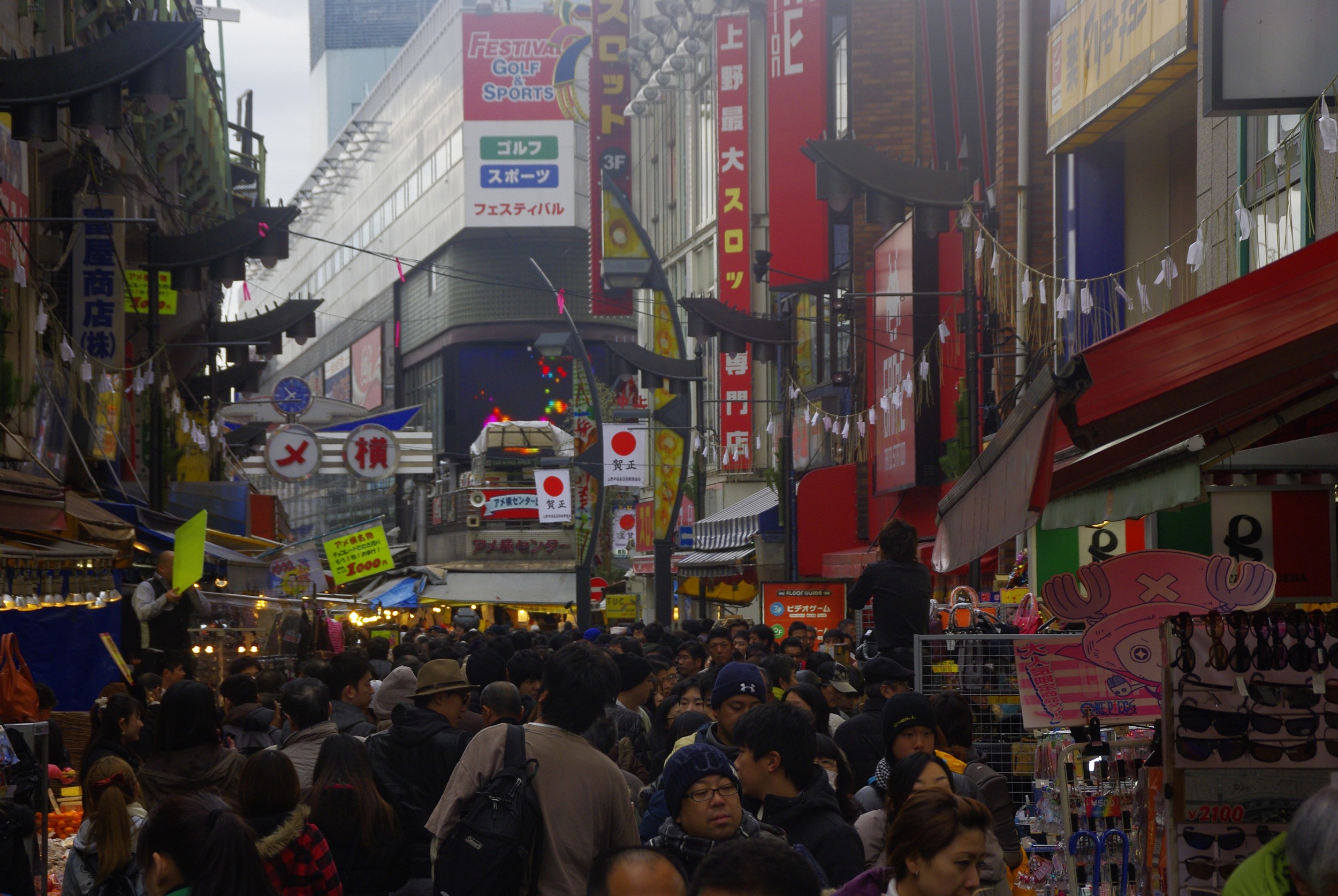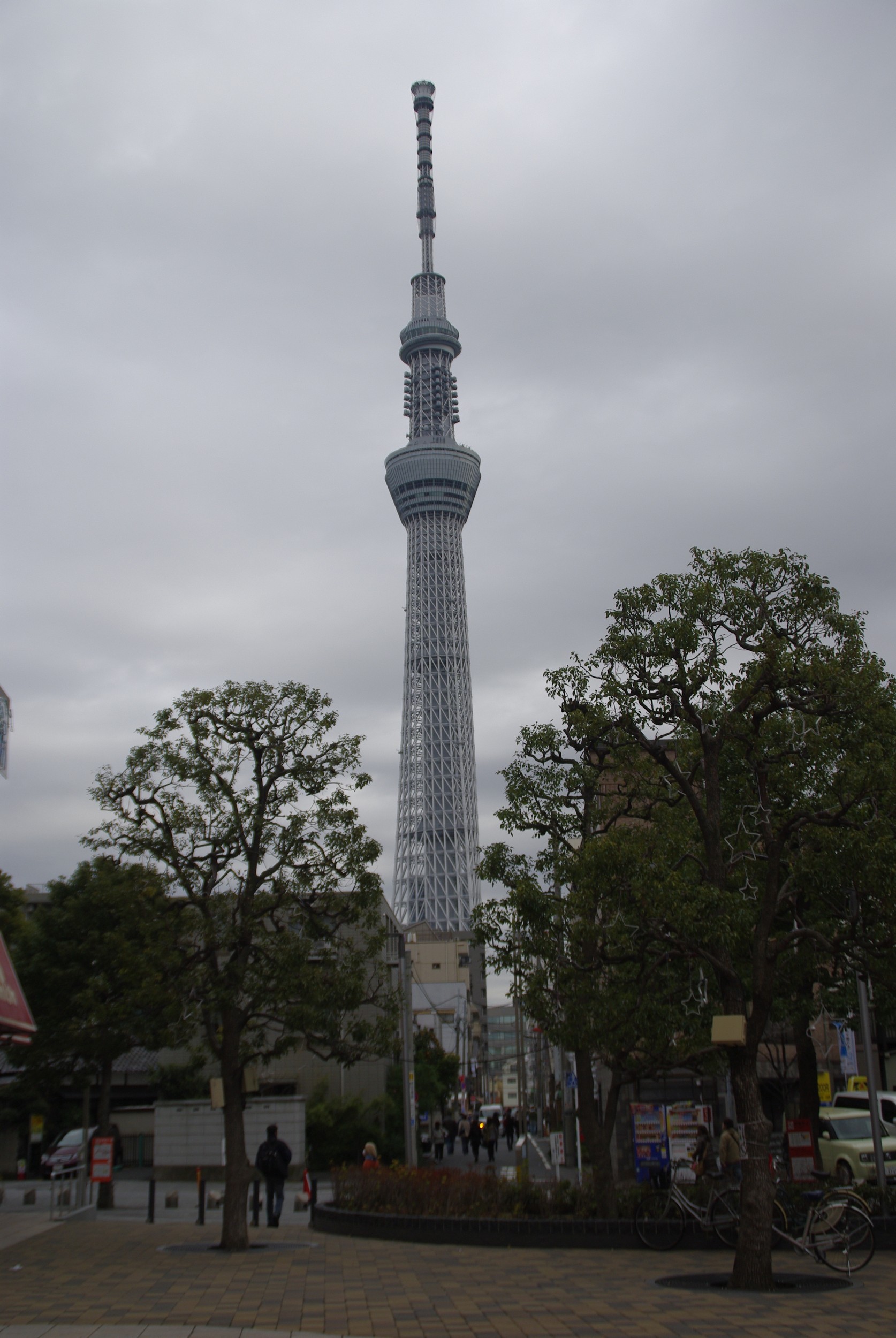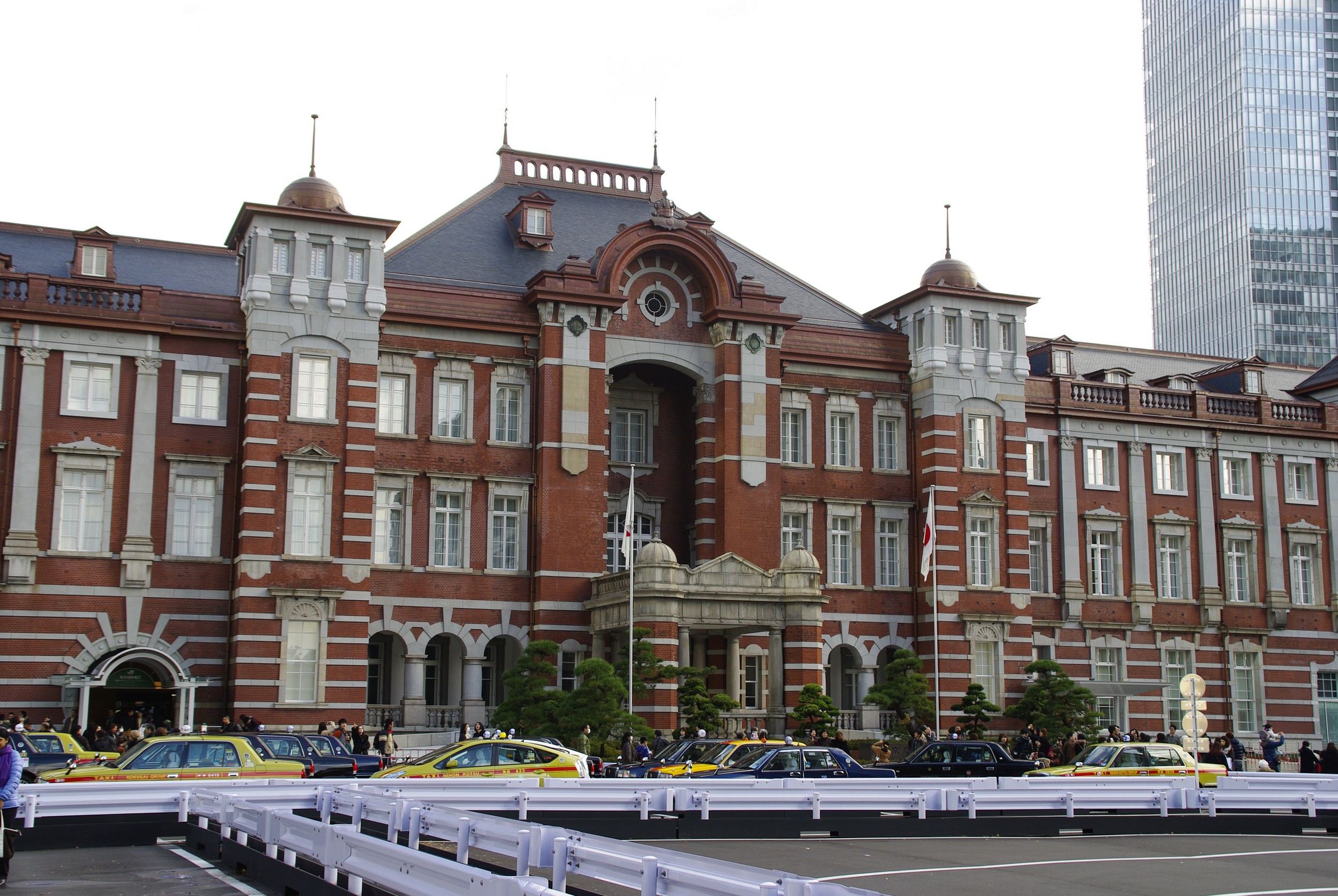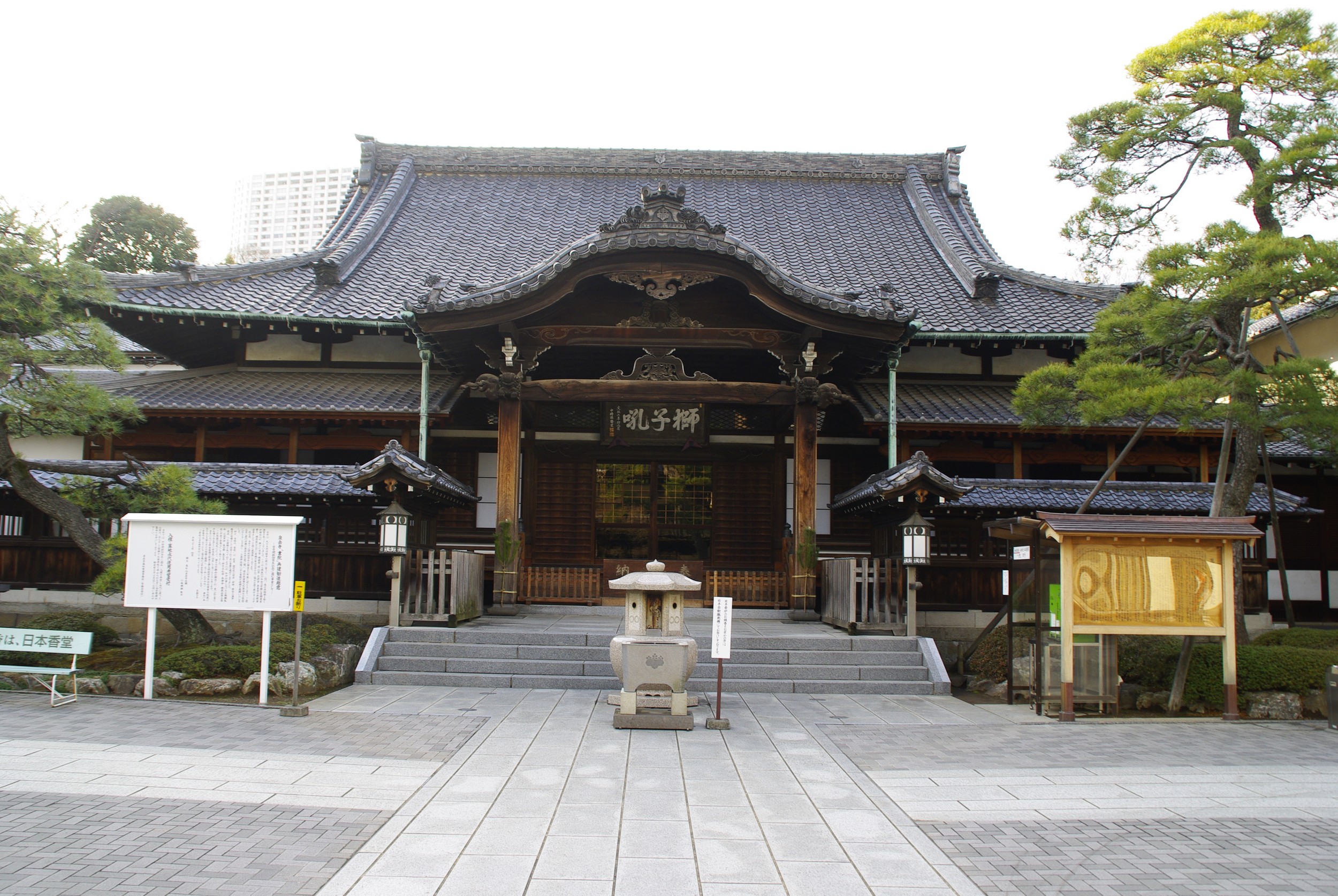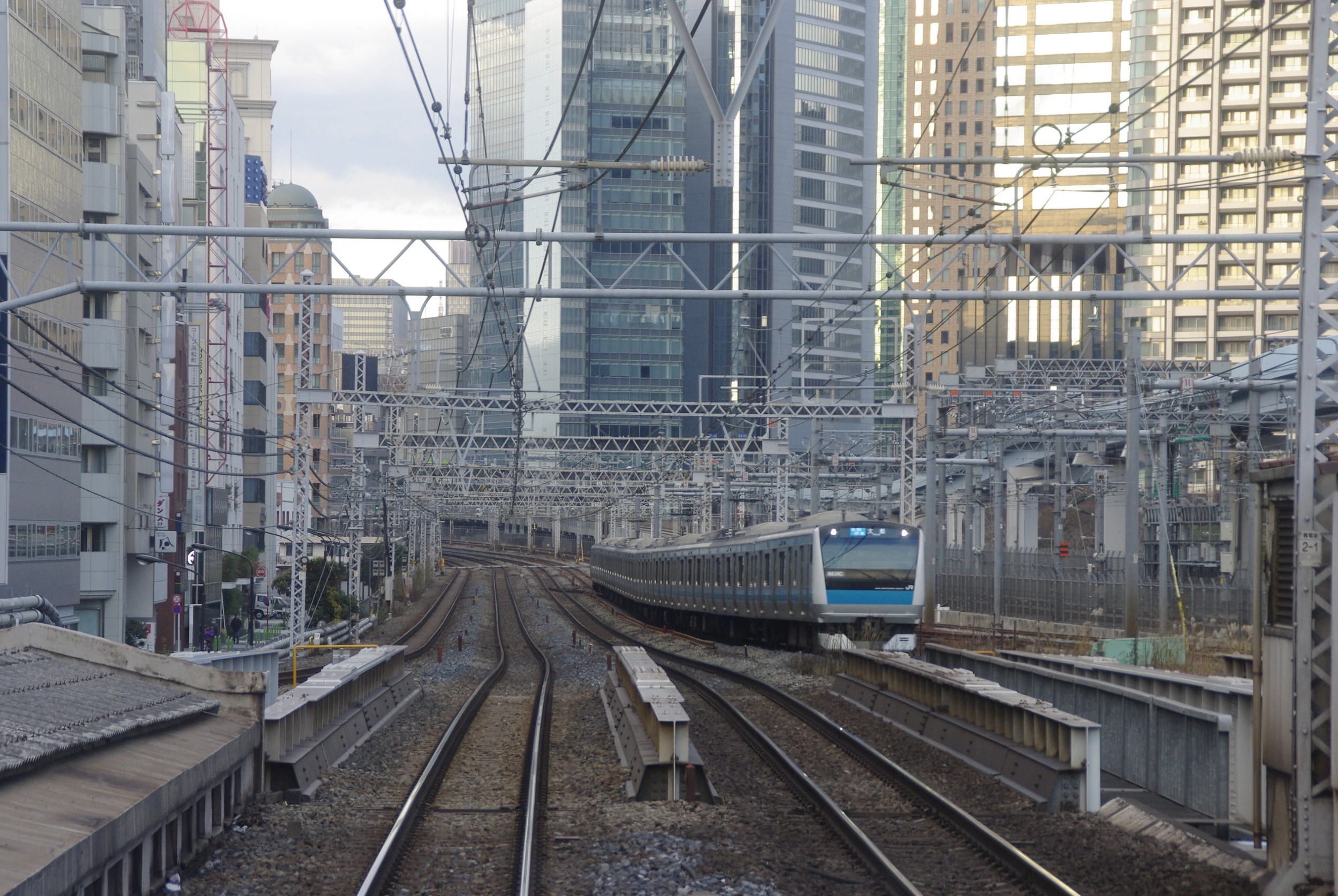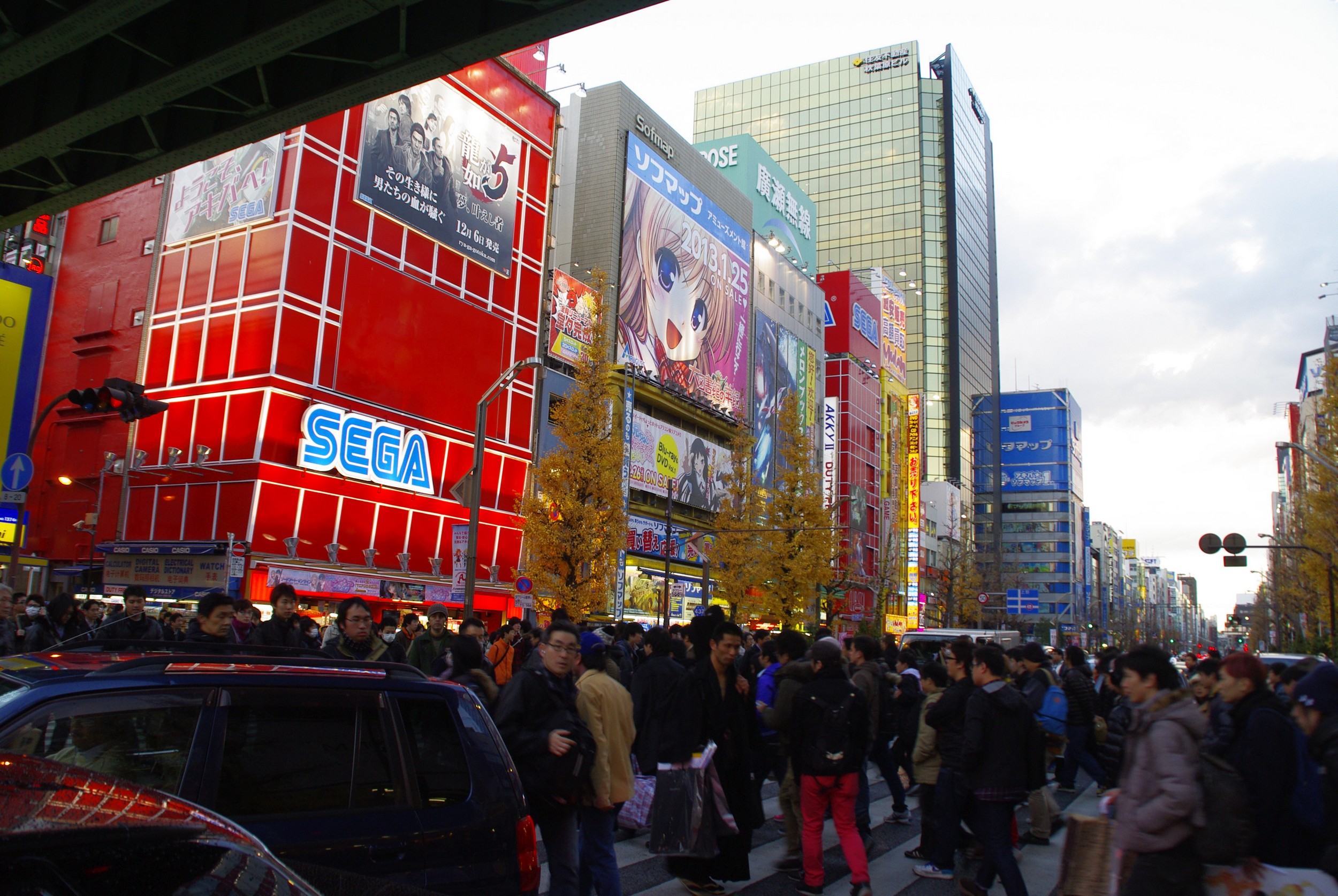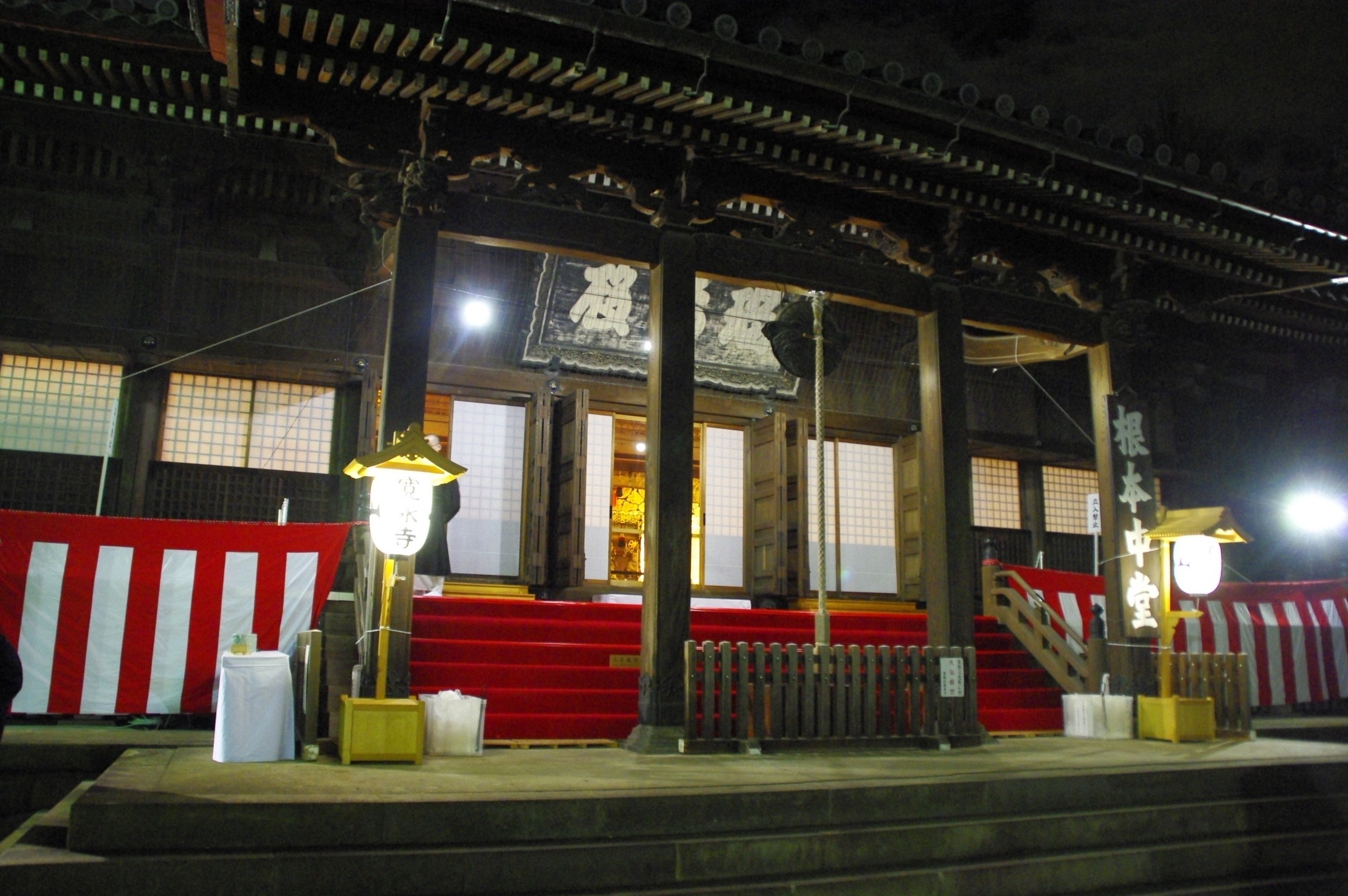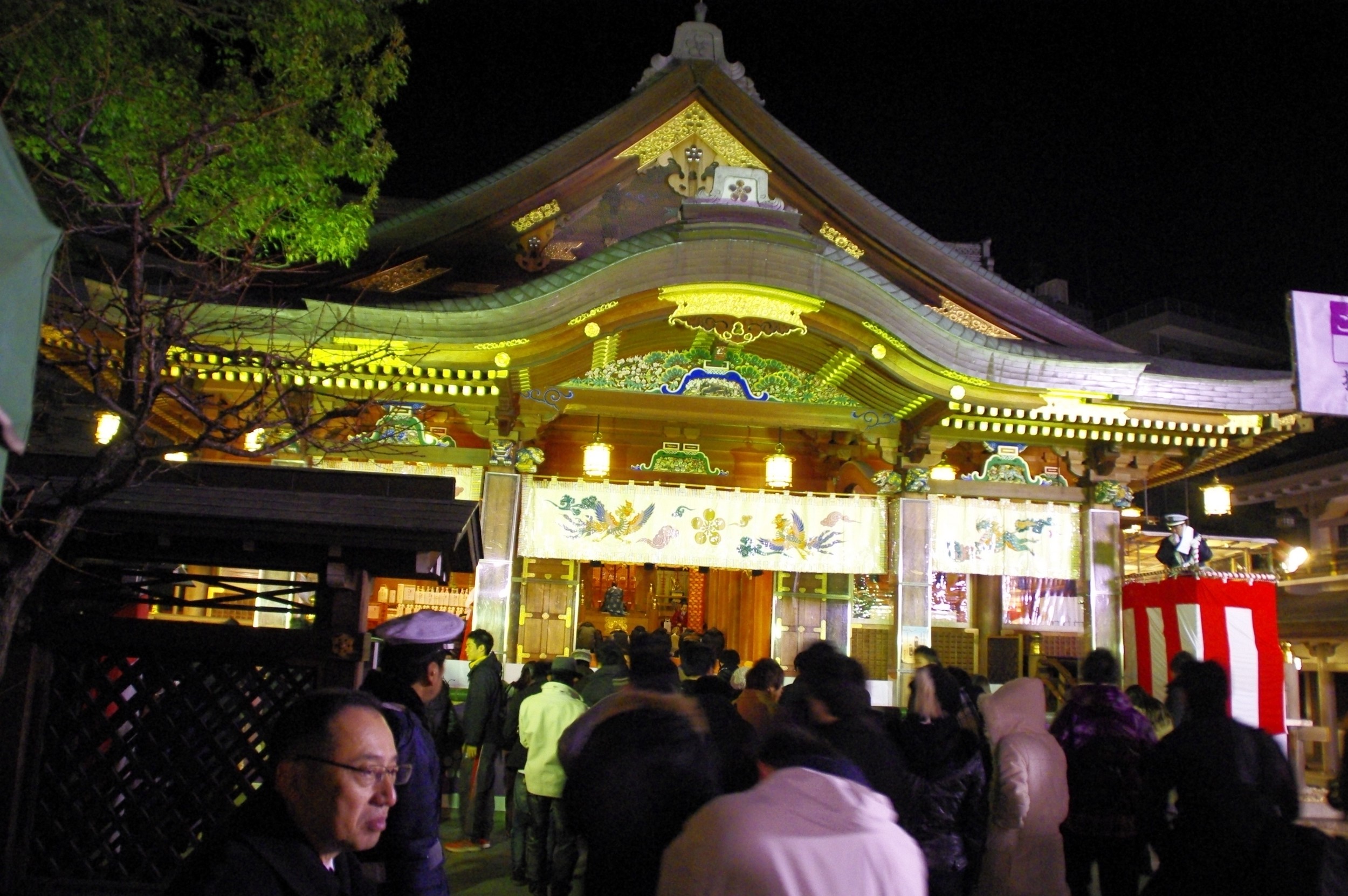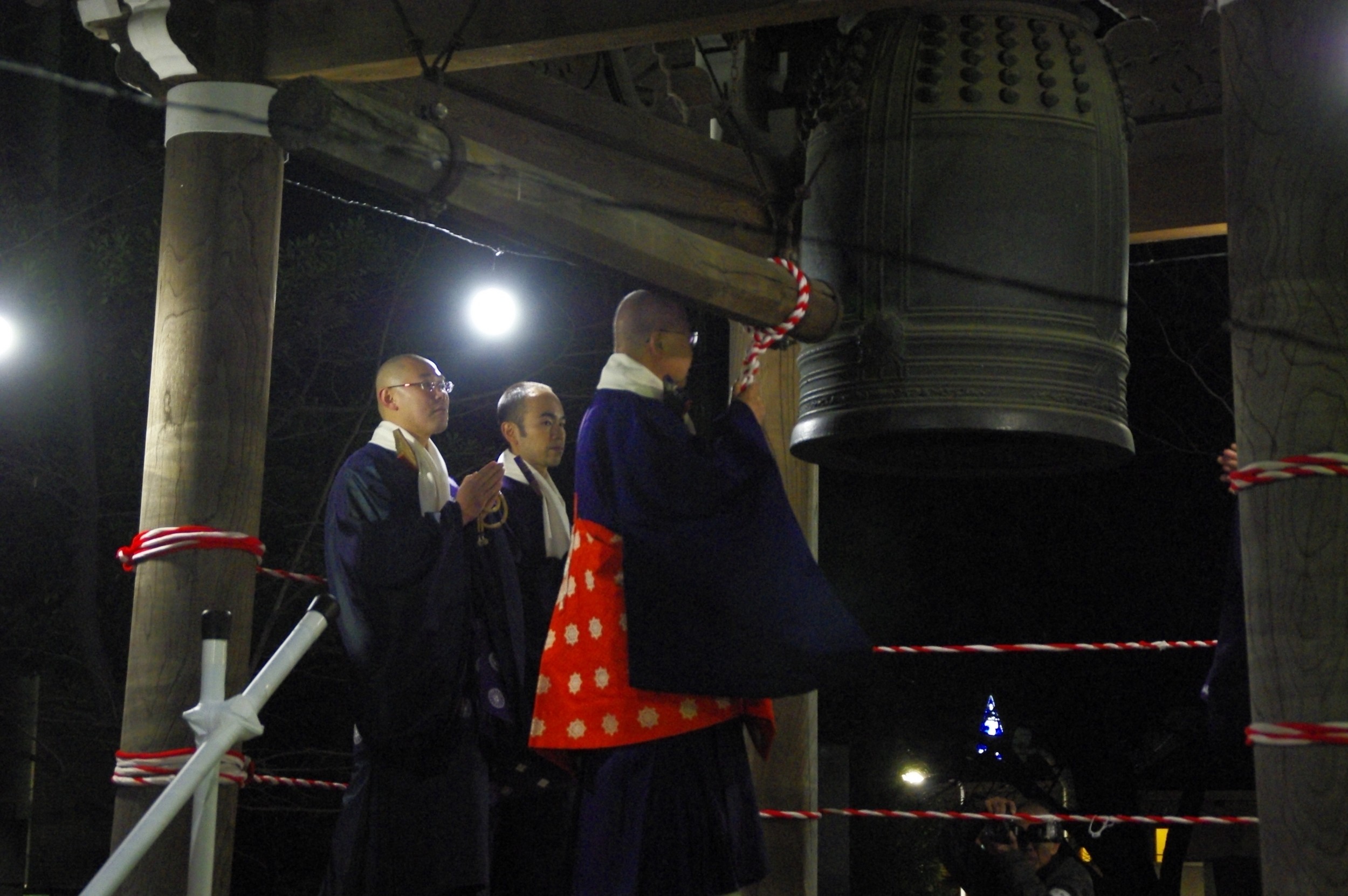I don’t have a detailed plan for today. There is no plan at all. First stop is Yushima Tenmangu. Then I walk to the Sumidagawa and to the shrine. I was carrying the Miskoshi two years ago. I make an observation: Tokyo is more dirty than I remember. And the number of hoboes seems to increase.
Next stop is the Sky Tree. This thing is tall, really tall. The foundation of the tower is a big shopping mall. I need some time before I understand how it is working. You have to queue to get a place on the waiting list. You get a „waiting ticket“ for 4:30pm. And it is just 11am. With the ticket you have to queue again at the printed time to buy the real ticket. Judging from the queue I will stay here at least 30 minutes for the waiting ticket. This is to stupid. I will kill the whole day by waiting. I will postpone the ticket.
Tokyo Sky Tree
The walk to the metropolitain garden I wanted to visit is wasted time. The garden is closed during the days around New Year. Therefore I walk to the Sumida bridge to Tokyo Eki. Now I am standing at the knot of the express ways that built be backbone of the traffic in Tokyo. It is just a east of Nihonbashi. The express way is stacked in several levels. Here I get a feeling how compact Tokyo is.
Now on my fifth journey I visit the old Tokyo station building. It looks like a combination of German and English architecture. And the tourist office I ask for things I can do within the next day. Which temple I should visit tonight. Looks like I know more about Tokyo the the ladies behind the desk. Will say: My question are too special. I am beyond the average tourist. But I learn two things: On January 2nd is a dragon dance and a tea ceremony here in Marunouchi. This I can combine with the visit of the emperor palace.
The day is half gone and was not really successful up to now. Place 2 on the worst-day-list behind Inuyama. I get the train to Shinagawa to visit the grave of the 47 ronin. The temple is nothing special. A unspectacular standard one. But the graveyard is well frequented. Hundreds of incense sticks are burning everywhere around the tombstones. The 47 ronin are more important figures in the Japanese culture than I thought.
At the late afternoon I take a stroll thru Akihabara. I want to buy special souvenirs and visit some Maiden Cafes. Pictures are not allowed. And I also will not report about this places here. Just: You are called „o-sama“ or „Master“. This is a very strange place, even for Japan. It is part of the Otaku subculture. Totemo hen.
At 6pm I am back at hte hotel. The lady at the reception desk promised me to ask the hotel owner for a good temple. Senno-ji and Zojo-ji will be a very impressive place tonight. But the chance to ring the bell will be zero. And many gaijins are there too. His suggestion is the Kane-ji at the northern end of Ueno-park. I never heard about this temple; the Lonely Planet neither. My chances to ring the bell seems to be good.
Impressions of Tokyo
I kill some timein the shopping streets of Ueno. Here it is like on a farmer’s market. I have dinner in a small place I found by accident. Kariage. Then I stop in the english pub next to the Ueno park. I meet an british guy. We talk until 10pm. Then I start to the temple.
This place looks empty. Am I at the right place? The bell is prepared. And a tent is there too. I observe a lady buying a ticket with a number. This looks promising. I try the same. Wow. The monks writes my name into the temple book. I get the number 10. Now it is official. I will ring the temple bell !
A few minutes after 11pm all guest are pleased to enter the temple. We are sitting here with 10 people but they are getting more. At 11:30pm the monks arrive and start the chanting followed by prayers. I hear drums. I suck in this moment with all my senses. It is one of the moments where you left behind the tourist and dive deep into the Japanse culture. It is as special at the Mikoshi-carrying in 2010 or the moon viewing in 2004.
Then the moment gas arrived. We walk to the bell. At midnight the head priest is doing the first strike. The other monks follow. Then we civilians are allowed to ring the bell. Number 10. My turn. I walk up the stairs, grab the rope, haul off and strike the wooden log against the iron bell. I stop the log so that no second strike will happen. That’s it. That’s all. While the other 88 complete the 108 chimes (108 in total – 10 monks – 9 before me – myself), I drink some sake and talk with other guest. Two observations: I am the only gaijin. And the older the person the louder and powerful the strike of the bell. It really is loud. It gives you a jerk.
New Year at the Kane-ji
After the 108 official chimes we add some more inofficial. Everyone who was helping the temple staff is ringing now. And I ring the bell again. Twice. This time with more power. After a few more cups of sake I walk back to the hotel. It is 2am. All the time it was a Tokyo night like any other night. No fireworks, no party on the streets. So completely different from Germany.
Only at Yushima Tenmangu this night differs from a usual night. It is crowded. The police has blocked the road for cars. There is a at least 200m long queue in front of the shrine. A strange way to celebrate New Year: Queueing to throw 100 yen into a wooden box.
For me it was a very special start into the new year. I always celebrated this way a little bit different. This time I outclassed myself: I am 1 of the 108 people who rang the bell at Kane-ji to start the year 2013 (Heisei 25).

